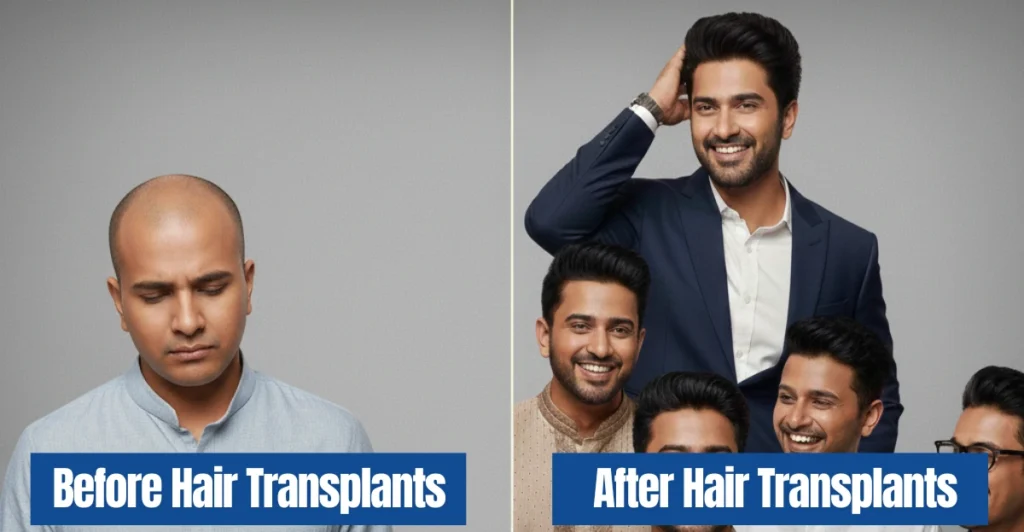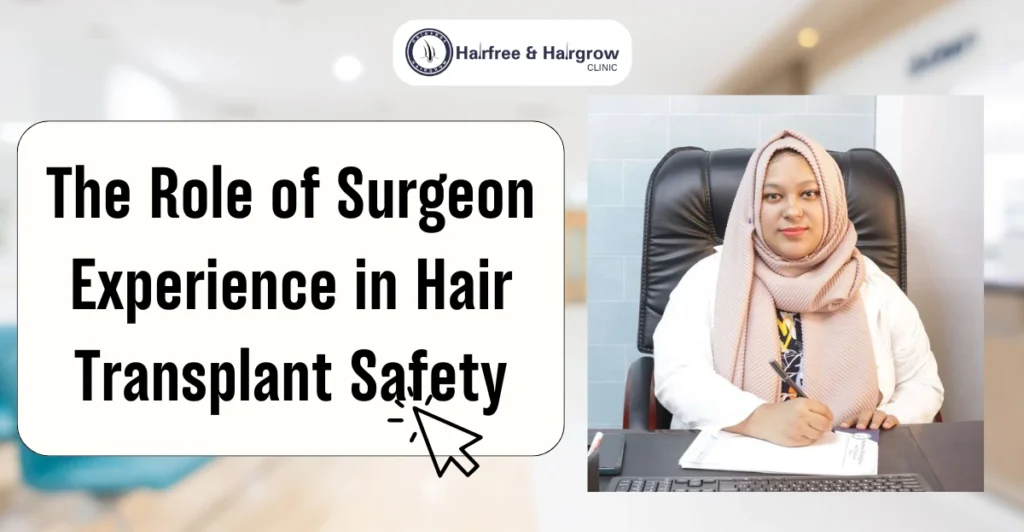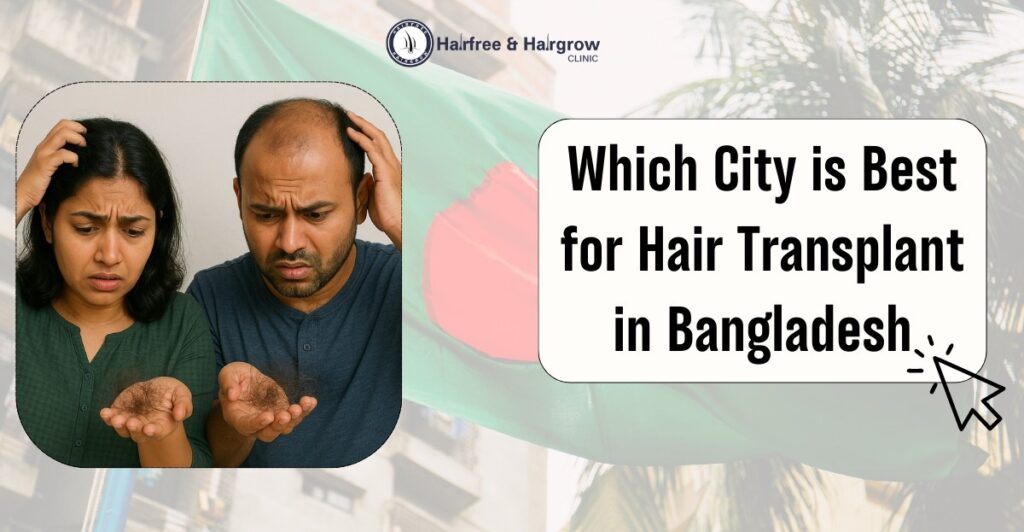Hair loss is a widespread issue affecting millions worldwide. While medical advancements have made it possible to treat male pattern baldness through techniques like hair transplants, Follicular Unit Extraction safety concerns often deter people from undergoing the procedure. This article addresses whether Follicular Unit Extraction (FUE), one of the leading techniques, is a safe treatment option for hair loss.
Table of Contents

How Does a FUE Hair Transplant Work?
An FUE hair transplant is performed on an outpatient basis under local anesthesia. The skilled surgeon first examines the patient’s scalp to determine the density and location of hair loss. They will also analyze the donor area at the back of the scalp to assess the number of follicular units that can be safely harvested.
During the procedure, the surgeon uses a specialized tool called an autograft punch or Extractor to puncture the scalp and gently remove individual follicular unit grafts one by one from the permanent donor area. Each delicate graft, consisting of 1 to 4 hairs, is extracted intact without damage. This separation is performed meticulously under a microscope. The harvested FUE grafts are then carefully implanted into the bald areas following microscopic analysis of the genetic hairlines and hair density.
The major difference between FUE and traditional strip harvest techniques is that FUE does not involve cutting out a strip of skin from the donor area. It harvests grafts individually using tiny punches to cause barely visible punctures in the scalp. This minimizes scalp scarring, damage, and downtime compared to conventional strip procedures.
Our Clinic Location: Hair Transplant in Dhaka
Is FUE Hair Transplant Safe?
Generally, If you are thinking Is FUE hair transplant safe, then a FUE hair transplant is considered a safe procedure for hair restoration when performed skillfully by a highly qualified surgeon. Its minimally invasive process of individually extracting follicular units makes it less painful and traumatic for the scalp than conventional strip surgery.
However, like any medical procedure, there are still certain risks and Hair transplant side effects involved like temporary wound pain, swelling, bruising, and scabbing around the transplant areas. These typically resolve spontaneously without complications within 1-2 weeks after the surgery. Poor follow-up care, underlying medical conditions, bleeding disorders, or infections may occasionally lead to higher risks.
The FUE hair transplant safety depends on factors like the surgeon’s skill level, hygiene protocols followed at the clinic, and the recipient’s healing ability. Extensive prior experience in FUE techniques helps surgeons avoid procedural mistakes and yield more natural-looking results with fewer side effects and higher graft survival rates.
Read Also: How Long Do Hair Transplants Last?
Benefits of Choosing FUE for Hair Restoration
- Minimally invasive procedure: As it doesn’t involve slicing out skin strips, FUE causes minor damage to the scalp and less discomfort than strip surgery. This translates to a quicker recovery time.
- Barely visible scarring: The tiny extraction wounds left behind by FUE hair transplant are nearly invisible once healed. This preserves the natural appearance of the scalp.
- Lower risk of complications: By minimizing trauma to skin and tissue, FUE lowers the chances of post-surgery infections, hematomas, numbness or nerve injuries.
- Greater hairline flexibility: Extracting single follicular units allows for crafting a natural and indistinguishable hairline pattern instead of linear patterns seen with strip methods.
- Improved cosmetic results: With proper implantation of individual follicular units, FUE can achieve a superior density, texture, and natural direction in grafted hairs for undetectable results.
Potential Risks and How to Minimize Them
- Infection: Rare risk can be minimized by choosing a surgeon/clinic with hygienic practices and meticulously following post-op care instructions.
- Scarring: Temporary pink/red scabs heal within 2-4 weeks. Risk is very low with FUE vs strips, especially if grafts are extracted professionally.
- Graft failure: Certain grafts may not grow if not extracted/appropriately implanted. Choosing an experienced FUE specialist helps maximize graft success rates.
- Hematoma/bleeding risks: Addressed well in experienced hands. Minor risk if medications/activities are not contraindicated post-surgery.
- Nerve injury chances: Extremely low with FUE but protected best through certified medical care only.
Tips for choosing a qualified surgeon and reputable clinic
- Opt for a board-certified doctor/technician with accredited qualifications and years of experience in the latest FUE tools/techniques.
- Select an accredited and well-maintained medical facility meeting international hygiene standards.
- Religiously follow post-care guidelines for wound dressings, activity restrictions, medications, etc. until the doctor recommends. This aids healing without problems or side effects.
Conclusion
As a minimally invasive hair transplant technique, FUE is considered a safe treatment option for hair loss when performed by a highly qualified and experienced medical professional. While carrying minimal FUE procedure risks of minor temporary side effects like any other surgery, FUE has fewer long-term risks and drawbacks than traditional strip harvesting methods. Most individuals recover smoothly with satisfactory outcomes with a trustworthy expert and proper post-operative care.
At Hairfree HairGrow, we are proud to be recognized as the top FUE hair transplant clinic in Bangladesh under the leadership of our renowned top hair transplant surgeons. With advanced technology and personalized care, we’ve helped countless individuals restore their hair and confidence with natural, long-lasting results.
Our clinic specializes in the Follicular Unit Extraction (FUE) technique, which is known to offer minimally invasive, scar-free and quick recovery periods. Each procedure is tailored to meet your unique needs, ensuring the most natural and effective results.
FAQ
Some minor risks include swelling, bruising, scabbing or infection. Rarely, damage to blood vessels during extraction can cause shock loss of grafts.
Ensure it is performed by a certified surgeon at a licensed clinic following all international safety protocols and sterilization standards.
No, there are generally no long-term side effects when performed skillfully. The transplanted hair grows naturally lifelong with no risks of complications.
Expect mild discomfort or swelling for a few days, which medication can easily manage. Resume activities within a week while fully healing within 2 weeks.

Written By
Dr. Nazmin Nipa
Medical Officer & Hair Transplant Surgeon
Dr. Nazmin Sultana Nipa is a distinguished hair transplant doctor in Bangladesh, known for her advanced skills in hair restoration. As a Medical Officer and Hair Transplant Surgeon, Dr. Nipa combines her extensive experience in the field with a focus on transparency and patient-centered care.
Disclaimer
We’ve made all possible efforts to ensure that the information provided here is accurate, up-to-date and complete, however, it should not be treated as a substitute for professional medical advice, diagnosis or treatment. See Detailed Disclaimers Here.



